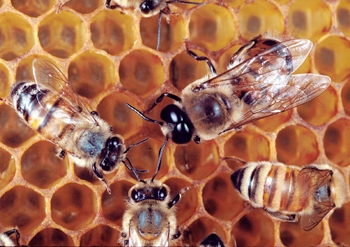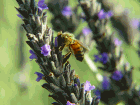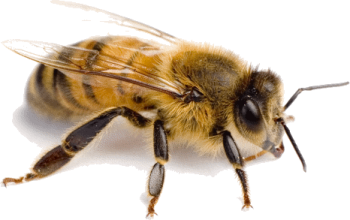
Activity of the Worker Bee.
Workers within a honey bee colony engage in various tasks, depending on their age and the needs of the colony. Division of labor by age exists within the worker caste. Bees less than 2 weeks old become involved in cleaning cells and feeding first the older larvae and then larvae of all ages. Workers function as nurse bees during the period that their hypopharyngeal glands are producing brood food.
Older house bees work with honey, pollen, wax, and propolis. Nectar-collecting field bees are met by house bees, usually near the entrance, and are relieved of their nectar loads. The conversion of nectar into honey requires both a physical and a chemical change. The physical change involves the removal of water, which is accomplished by externally manipulating nectar in the mouth parts and then placing small droplets on the upper side of cells and fanning the wings to increase air move ment and carry away excess moisture. (Nectar is 30 to 90 percent water, but honey should have no more than 18.5 percent water.) The chemical change requires the addition to nectar of the en zyme invertase, which the bees produce in their salivary glands. This enzyme breaks the disac charide sugar, sucrose, into two monosaccharide sugars, glucose and fructose. (Nectar may be nearly all sucrose or may contain no sucrose, but honey contains an average of only 1 percent sucrose.)
Pollen pellets are deposited in empty cells near the brood nest by the pollen-collecting workers. In the cells, the pollen undergoes a maturing process to what is commonly called bee bread. Details of the maturing process are not understood.
When bees are about 12 to 15 days old, their wax glands become functional and comb building is possible. Wax scales are removed from between the ventral abdominal sclerites and positioned into place using both feet and mouthparts. Young house bees in the process of comb building hang in festoons and pass the wax scales from bee to bee.
Propolis-collecting bees also serve as propolis storage reservoirs. Propolis is not stored in combs or elsewhere, but is removed from the corbiculae of these field bees and used as needed. House bees fill cracks and cover rough parts with propolis.
During their third week as house bees, workers take short flights for orientation and defecation. Hives painted different colors aid the bees with orientation and reduce the chance of young bees drifting between adjacent colonies. Some of the oldest house bees also serve as guards at the entrance.
After approximately 3 weeks as house bees, the workers become foragers, gathering pollen, nectar, water, and propolis for the colony. This period of their lives also averages about 3 weeks. Most foragers collect nectar and pollen, but nectar is collected in greater quantities than pollen. Pollen collection tends to be an activity of younger foragers and nectar collection a function of older foragers. Water collectors may comprise 10 percent of all foragers, but this figure is much higher during periods of heat stress. Propolis collectors are quite rarely observed.
The schedule of worker bee activities is both flexible and reversible, depending more upon physiological age than on chronological age, and is altered according to the needs of the colony. During autumn, a reduction in brood rearing and an increase in pollen consumption result in a population of long-lived "winter" bees having increased fat bodies and protein reserves. The normal 6-week adult life of "summer" bees may be extended to several months in these "winter" bees. Similar extensions of life expectancy also occur when brood rearing is interrupted at other times.
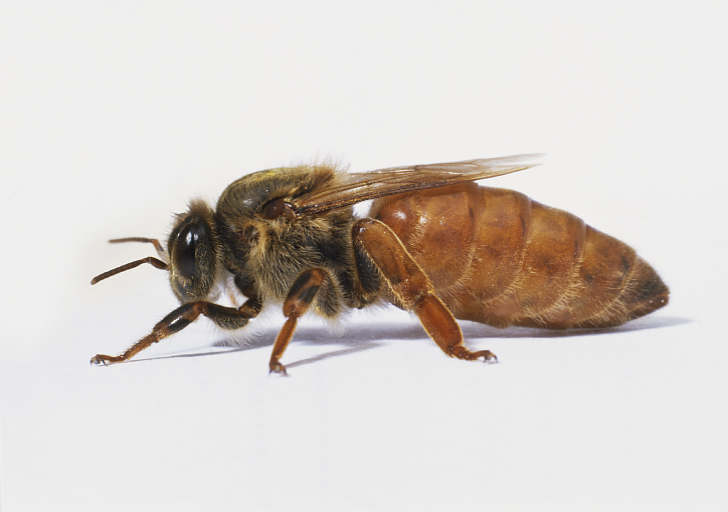
Activity of the Queen Bee.
New Queens emerged from their cells are at first ignored but are later touched and licked by workers. This apparently helps prepare the virgin queen physiologically for her mating flight. Mating occurs in drone congregation areas-special locations in the air regularly visited by drones. These occur in the same places year after year.
A queen generally mates 6 to 10 days following emergence. She may go out on several mating flights, mating with several drones on each flight. Additional mating flights are taken until the spermatheca contains an adequate supply of semen (5 million to 6 million spermatozoa). If mating is delayed more than 3 weeks, there is a high risk of her becoming a drone-layer. Egg-laying usually commences within a week after mating, and a queen can continue to lay fertilized eggs throughout most of her life-usually 2 to 5 years. An old queen will not go out and mate again when her original supply of semen becomes depleted-she simply becomes a drone-layer. An old queen and her supersedure daughter sometimes coexist, thus contradicting the commonly accepted idea of one queen per colony.
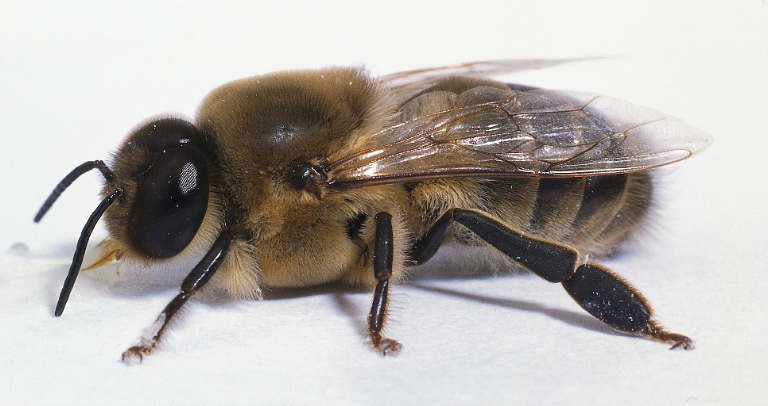
Activity of The Drone Bee.
Drones take their first flights at about 8 days of age and are sexually mature at 12 days. Drones fly out on cleansing flights and orientation flights-both of short duration-and also on longer flights to congregation areas in search of a virgin queen. Drones do not forage and spend about three-fourths of their time at complete rest. Their normal lifespan is 8 weeks or less.
One Word of Caution:
Honey should not be fed to infants under one year of age. Honey is a safe and wholesome food for children and adults. Little ones do not have a fully developed immune system and will not derive the health benefits as adults and older children receive.
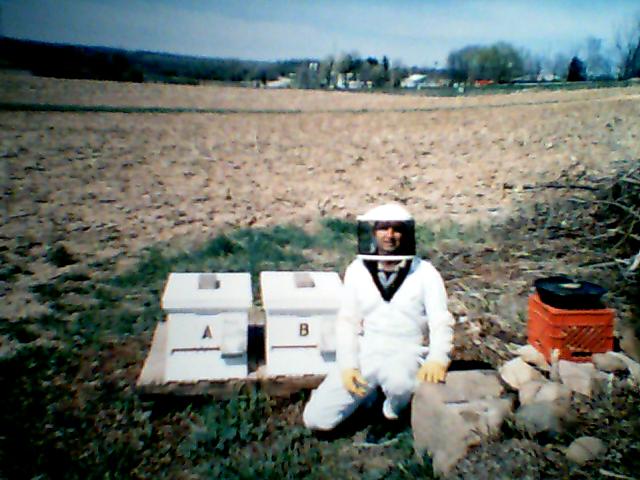
Jerrel C. Thomas
Started His Beekeeping in 2001, Big Bend WI.
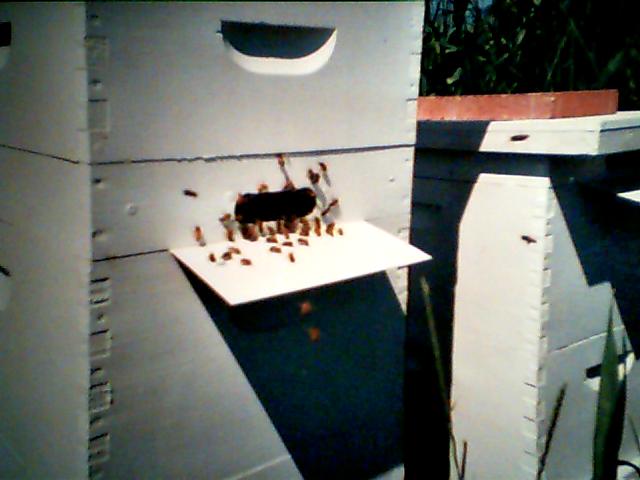
Fresh From The Flowers, Back To The Hive, Into The Jars.
ROW HONEY, By Golden Delight Beekeeping Is 100 % Pure, Natural, Wisconsin Honey. My Honey Is Extracted From The Frames Of Honey Comb, Lightly Filtered To Remove Any Pieces Of Wax, And Then Immediately Bottled.
I Hope That You Have Enjoy Your Stay.

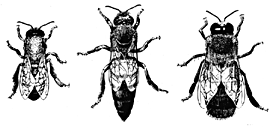
The Worker, Queen, & Drone.

